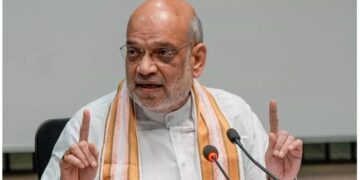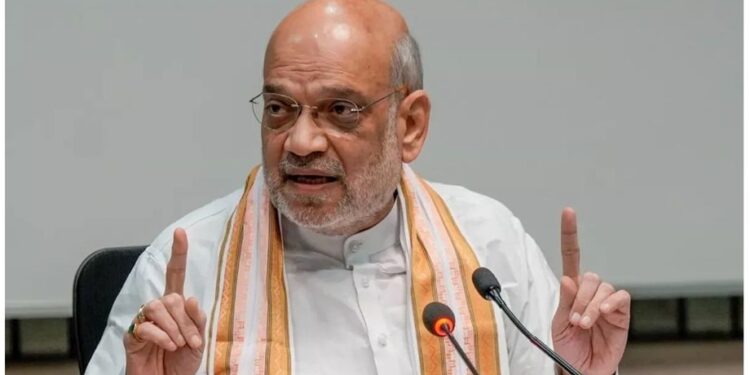Login to Continue Learning
On July 24, 2025, in New Delhi, Union Home Minister and Minister of Cooperatives Shri Amit Shah officially unveiled the National Cooperation Policy 2025. This event marked a significant step towards India’s journey toward inclusive, sustainable, and people-centric economic development. The unveiling was attended by key dignitaries, including Union Minister of State for Cooperatives Shri Krishan Pal Gurjar, Shri Murlidhar Mohol, Cooperation Secretary Dr. Ashish Kumar Bhutani, and Shri Suresh Prabhu, former Union Minister and chairman of the policy’s drafting committee.
The policy emerged from an extensive national-level consultation process led by a 40-member expert committee. This committee gathered insights from cooperative leaders, academicians, government agencies, RBI (Reserve Bank of India), and NABARD (National Bank for Agriculture and Rural Development). The committee held 17 meetings, received around 750 suggestions, and conducted regional workshops before finalizing the policy framework.
### Visionary Policy Aligned with ‘Sahkar Se Samriddhi’
Shri Amit Shah highlighted that this policy aligns with Prime Minister Narendra Modi’s vision of ‘Sahkar Se Samriddhi’ (Prosperity through Cooperation). He noted the historical significance, as the first national cooperation policy was introduced in 2002 during Atal Bihari Vajpayee’s tenure. Now, in 2025, another policy is launched under the same party’s leadership, signaling long-standing political will and a governance model that prioritizes grassroots economic empowerment.
The Minister stressed that the cooperative model democratizes capital, generates mass employment, and ensures inclusive development, particularly for rural India, women, Dalits, tribals, and youth. It presents a bottom-up economic framework in line with India’s vision of becoming a $5 trillion economy and the world’s third-largest by 2027.
### Six Strategic Pillars
The National Cooperation Policy 2025 is structured around six foundational pillars:
1. **Strengthening the Foundation** – Enhancing institutional and legal frameworks.
2. **Promoting Vibrancy** – Infusing innovation, capital, and operational dynamism.
3. **Preparing for the Future** – Introducing digital tools and youth participation.
4. **Enhancing Inclusivity and Reach** – Ensuring representation from marginalized communities.
5. **Expanding into New Sectors** – Including tourism, green energy, insurance, and transport.
6. **Engaging the Young Generation** – Making cooperatives a viable career choice.
Each pillar is designed to foster a self-reliant, equitable, and digitally integrated cooperative ecosystem.
### Ground-Level Implementation and Economic Targets
The policy includes concrete goals:
– Triple the cooperative sector’s contribution to India’s GDP by 2034.
– Increase cooperative societies by 30%, from 8.3 lakh to over 10.8 lakh.
– Bring 50 crore citizens into active cooperative participation, especially in rural areas.
– Ensure at least one primary cooperative unit in every panchayat.
The plan involves 83 intervention points, with 58 completed and 3 fully implemented. Two interventions require continuous monitoring, while work on the rest is underway.
### Leveraging Technology and Youth for Cooperative Rebirth
The Ministry has completed computerization of PACS (Primary Agricultural Credit Societies) and is pushing for tech-enabled transparent governance across all cooperatives. An ambitious monitoring and cluster-based model is being created to ensure accountability, scalability, and efficiency. The Tribhuvan Sahkari University will supply skilled manpower, and efforts are underway to build five model cooperative villages in every tehsil through NABARD. These will serve as prototypes for nationwide replication, integrating White Revolution 2.0 to boost women’s participation in rural dairy cooperatives.
### New Initiatives
The government will launch the Sahkar Taxi initiative, where drivers will receive full profits, revolutionizing livelihoods for transport workers. Additionally:
– 4,108 PACS have been approved to open PM Jan Aushadhi Kendras.
– 393 PACS have applied for petrol/diesel retail outlets.
– 100+ PACS are entering LPG distribution.
– PACS are implementing the Har Ghar Nal Se Jal and PM Surya Ghar Yojana schemes.
These efforts reflect the Ministry’s resolve to make cooperatives multifunctional service hubs for rural communities.
### Legal Evolution and International Outreach
To future-proof the sector, a mechanism is in place for reviewing and amending the policy every 10 years. Three multi-state cooperative societies have been created for exports, seed production, and organic branding. The establishment of National Cooperative Exports Limited will integrate Indian cooperatives into global value chains.
### Aatmanirbhar Bharat Through Member-Centric Models
Shri Amit Shah underscored that the policy’s core philosophy revolves around member welfare, self-respect, and equal opportunity. He reiterated that the cooperative movement is a forward-looking model capable of:
– Empowering rural communities.
– Driving economic growth.
– Promoting social inclusion.
With youth engagement, technological modernization, and strategic sectoral expansion, the National Cooperation Policy – 2025 charts a bold path forward, ensuring India’s cooperative movement evolves into a globally respected and economically powerful pillar of the national economy.
📚 Reading Comprehension Quiz
On which date was the National Cooperation Policy 2025 officially unveiled in New Delhi?
Please login or register to take the quiz and earn points!



















